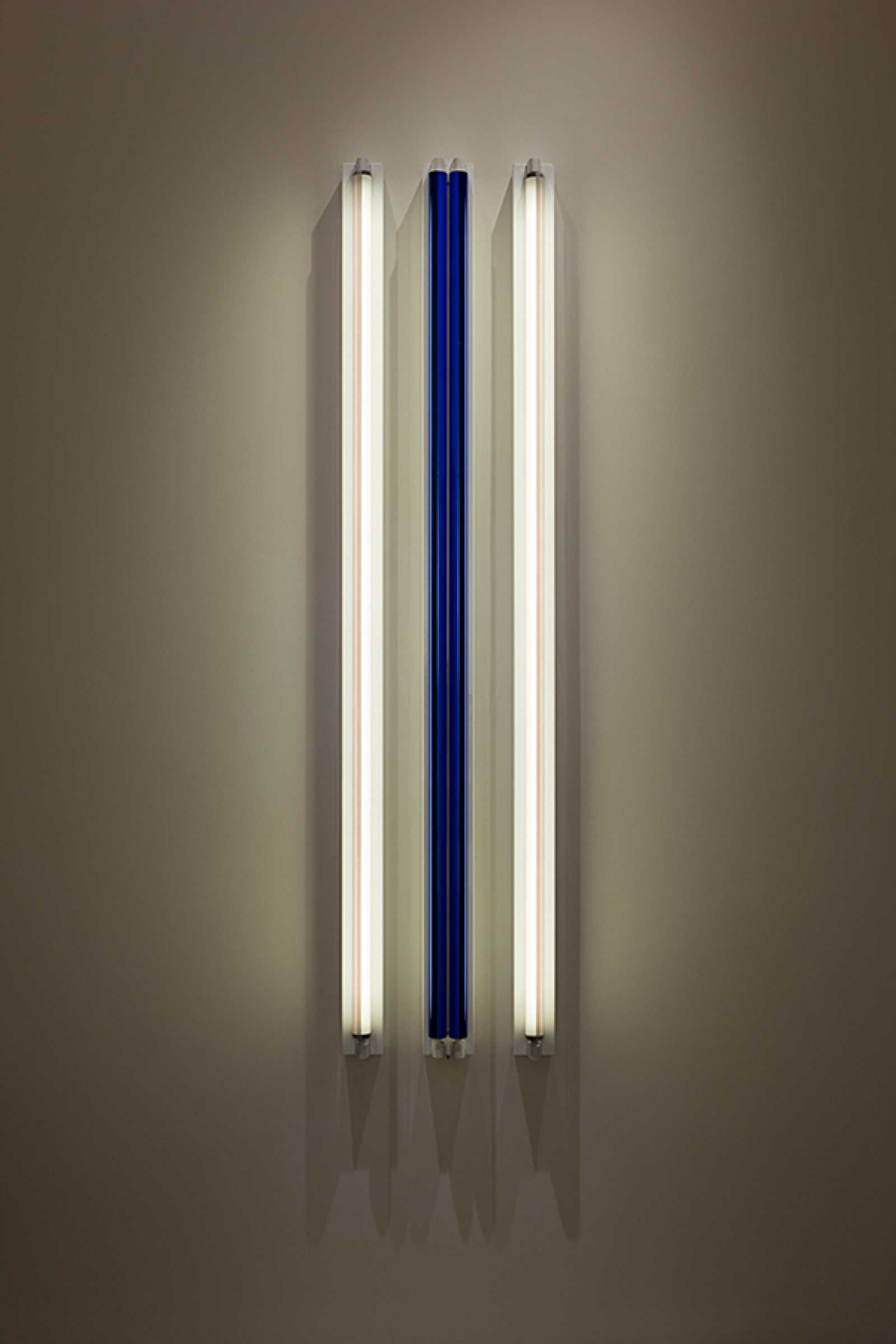Artworks of the Week
Robert Irwin
Robert Irwin’s fluorescent installations, like much of the art that emerged from the Light and Space movement with which he is associated, often demonstrate to the viewer how his or her perception operates. These works are designed to produce very specific visual effects, drawing one’s attention to how sources of light act and interact, and how the color and opacity of objects can be transformed by the presence or absence of light. In studying them, we experience the sensitivity and mutability of our own sight.
At first glance, #3 x 6'D Four Fold seems supremely quotidian in its materials and composition: four fluorescent bulbs of the same dimensions and vertical orientation aligned on a white wall. However, closer inspection begins to reveal the intricacy of Irwin's intentions. The two adjacent inner tubes are not themselves colored. Rather, they have been wrapped in thin layers of theatrical gels and secured with adhesive tape in order to create a light that is deep red at its core with thin bands of crisp lavender at the edges. The outer tubes, which look to be a pure and neutral white, are not in their original condition either—they have been modified in the same manner. The bulbs also have independent power switches, allowing them to be illuminated in different configurations that dramatically alter their appearance. Turning off the outer tubes causes them to turn a reflective silver and—without the light that they emit—the inner tubes shift to a succulent orange-pink. When these inner tubes are themselves extinguished, they become a rich blue.
Robert Irwin (American, born 1928), #3 x 6'D Four Fold, 2013, fluorescent light bulbs, theatrical gels, and electrical tape, 72 × 17 1/4 × 4 1/4 inches. Gift of L.J. Cella, 2019.209.
Dan Namingha
By embracing his Hopi-Tewa ancestry, Dan Namingha carries a strong family tradition of artistic expression into its fifth generation. His great-great-grandmother Nampeyo (Hopi-Tewa, ca. 1860-1942) is credited with having rekindled the ancient art of Hopi pottery. The practice and study of art was part of Namingha’s childhood and led him toward new movements that encouraged experimentation with traditional Native American art forms. Equally inspired by his heritage and by modern art, Namingha learned to transform—with deep understanding and authority—the symbols of his own visionary culture into contemporary works.
In the mid-1970s, Namingha began to explore the architectural structure and sensibility of the ancestral villages of the ancient Hopi and Pueblo cultures. In Coming of Winter, the forms of the pueblo emerge and blend with the more organic forms of the landscape. In the Hopi belief system, civilization emerged from the earth, and the desert landscape provides a source of spiritual strength. Thus in this work, the multilayered rock forms are the artist’s depiction of the way the earth was formed, with the clusters of Pueblo dwellings appearing as though rising out of the earth toward the azure sky. There is a continuity between the geological formations underground and the natural and man-made structures above.
Dan Namingha (American, Hopi-Tewa, born 1950), Coming of Winter, 1976, acrylic on canvas, 72 × 60 inches. Gift of Loren G. Lipson, M.D., 13-2008.


